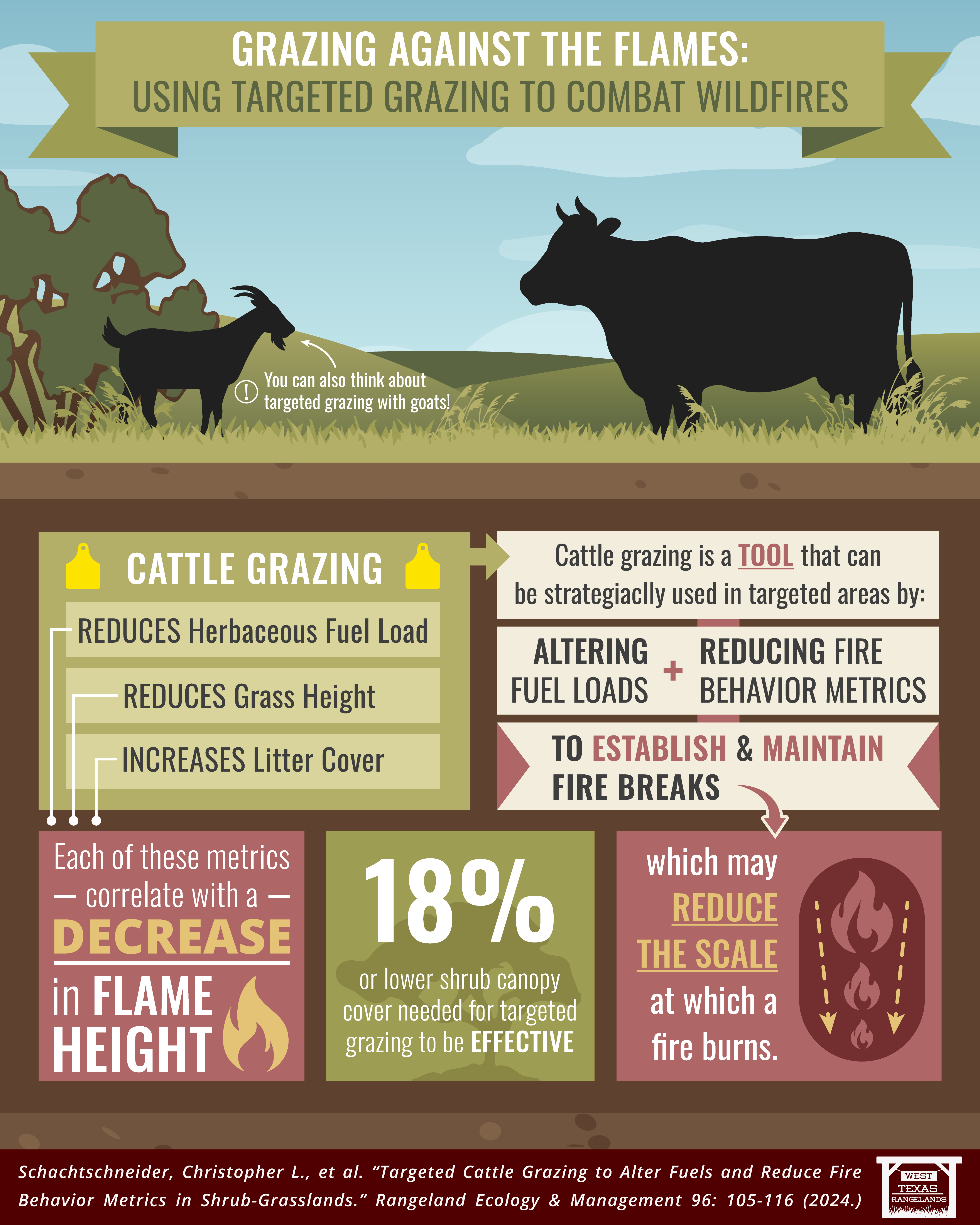 Wildfires are an escalating global crisis, marked by increasing size, frequency, suppression costs, and devastating losses. In the search for effective mitigation strategies, targeted grazing has emerged as a promising technique, strategically employing livestock to manage vegetation and diminish wildfire risks.
Wildfires are an escalating global crisis, marked by increasing size, frequency, suppression costs, and devastating losses. In the search for effective mitigation strategies, targeted grazing has emerged as a promising technique, strategically employing livestock to manage vegetation and diminish wildfire risks.
The research paper “Targeted Cattle Grazing to Alter Fuels and Reduce Fire Behavior Metrics in Shrub-Grasslands” by Schachtschneider et al. (2024) provides a deeper dive into the science underpinning this approach.
How Does Targeted Grazing Work?
Livestock, such as cattle and goats, act as natural vegetation managers. When strategically introduced to areas with high herbaceous fuel loads (like tall grasses and brush), their grazing accomplishes the following:
- Reduces fine fuel load: Grazing animals consume accumulated (sometimes dormant) vegetation, decreasing the amount of fuel available for fires.
- Reduces grass height: Shorter grass due to utilization (% removed) is less likely to ignite and can slow down fire spread and growth if winds are favorable.
- Increases litter cover through hoof action: Grazing can increase the layer of compacted plant material on the ground, which retains moisture and further hinders fire spread.
The research emphasizes that these changes in vegetation lead to a decrease in flame height, a critical factor in wildfire management. Lower flame heights make fires easier to suppress and reduces the risk of intense crown fires.
Moreover, targeted grazing can establish and maintain strategic fuel breaks. By reducing fuel loads in specific areas, grazing helps to disrupt fire spread, protecting vulnerable areas. Strategically placing supplemental feed and cubes, salt, and mineral can be advantageous in creating anchor points or improving fire breaks.
Schachtschneider et al. (2024) highlight that grazing effectiveness is influenced by the plant community. Their research suggests that a shrub canopy cover of 18% or lower is often necessary for targeted grazing to effectively and efficiently reduce fire behavior metrics. This emphasizes the need to consider the specific vegetation composition when implementing grazing strategies. Further ensuring the correct grazing strategy (and animal) is applied!
Targeted grazing presents a potentially sustainable and ecologically conscious approach to wildfire management. By mimicking natural processes, it can be integrated into rangeland management practices, promoting ecosystem health while reducing fire risk. As we face erratic and unpredictable fire behavior complicated by wildland urban interface areas, integrating scientifically-backed, rangeland process-based solutions like targeted grazing will be essential to build resilience into our fire-dependent rangeland landscape and communities.
Be sure to read the full study – Targeted Cattle Grazing to Alter Fuels and Reduce Fire Behavior Metrics in Shrub-Grasslands